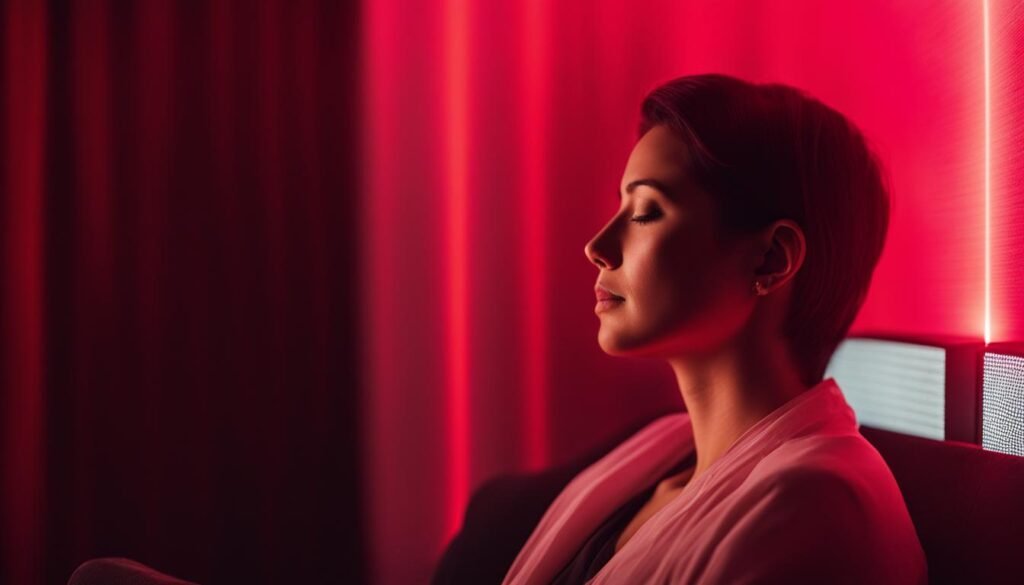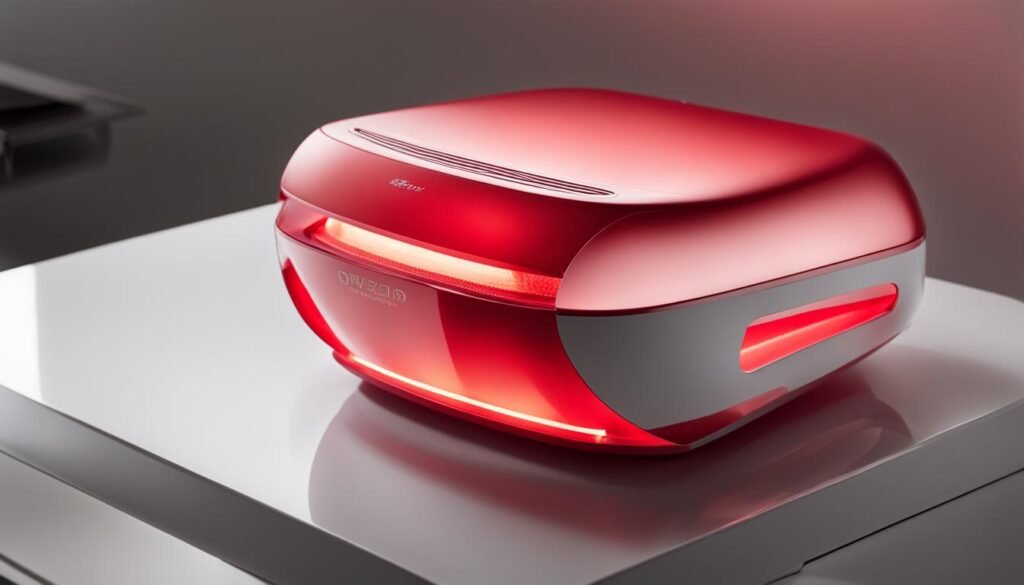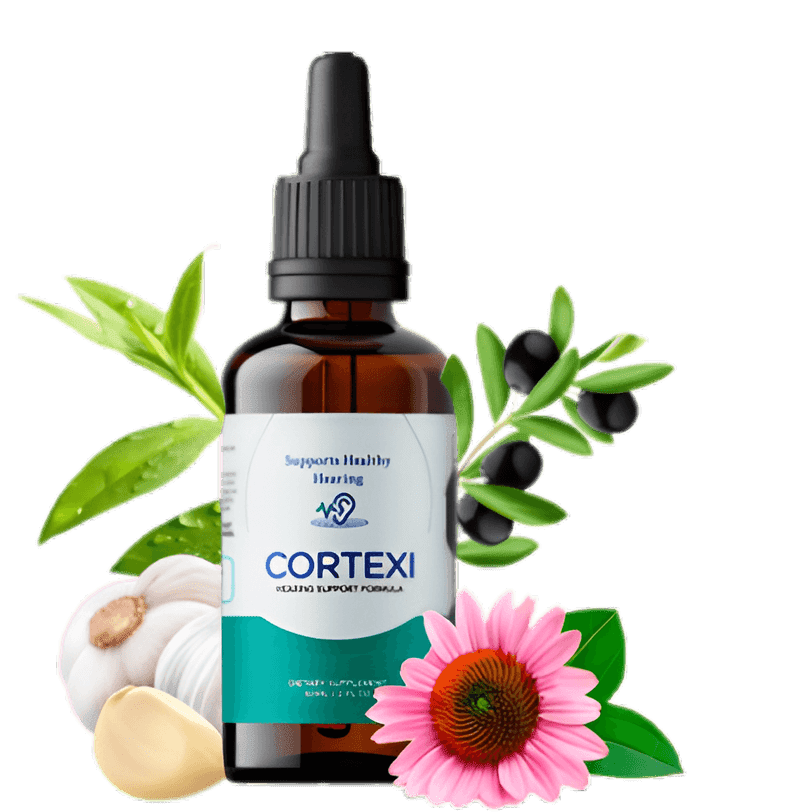Does red light therapy help tinnitus? This question is fascinating to those suffering from tinnitus, a complex condition often accompanied by hearing loss, which can significantly affect quality of life. In this article, we explore the potential benefits of red light therapy as a treatment option for tinnitus, delving into scientific studies to understand its effectiveness.
Red light therapy, which involves using specific wavelengths of red and near-infrared light, has demonstrated potential in healing and strengthening body cells. Research specifically targeting red light therapy for tinnitus is limited, but its success in managing pain and inflammation, which are common in tinnitus patients, suggests it offers benefits. This article will examine the current understanding of red light therapy in the context of tinnitus treatment, assessing its potential as a practical therapeutic approach.
Key Takeaways:
- Red light therapy may provide relief for individuals with tinnitus.
- Scientific studies support the effectiveness of red light therapy in managing pain and inflammation.
- Tinnitus is a complex condition often accompanied by hearing loss.
- Before considering red light therapy for tinnitus treatment, consulting with a healthcare professional is essential.
- Choosing reliable red light therapy devices is crucial for optimal results.
Understanding Tinnitus and its Burden
Tinnitus is a common condition characterized by hearing sound in the head or ears without an external source. It affects millions worldwide and can significantly impact their quality of life. The burden of care theory suggests that individuals with tinnitus experience a considerable burden due to the need for treatment, coping strategies, and learning about the condition. This burden of care can be overwhelming and may contribute to the overall distress experienced by tinnitus patients.
Patients with tinnitus often find themselves responsible for managing their treatments, ranging from medications to therapies and lifestyle changes. This treatment burden can be challenging, as individuals may struggle to find practical solutions and face the frustration of trial and error. Furthermore, the chronic nature of tinnitus means that patients have to continually manage their symptoms, leading to ongoing stress and anxiety.
To address the burden of care experienced by individuals with tinnitus, healthcare professionals must approach patient-centred care. This involves recognizing patients’ cumulative commitments and providing support and resources to help alleviate these challenges. Healthcare providers can empower patients to better cope with their condition and enhance their overall well-being by adopting a holistic approach to tinnitus management.
The Potential of Red Light Therapy for Tinnitus
Red light therapy, utilizing specific wavelengths of red and near-infrared light, has shown great promise in healing and strengthening the body at a cellular level. While research on red light therapy specifically for tinnitus is limited, studies have indicated its efficacy in managing pain and inflammation, which are often associated with tinnitus. Red light therapy may relieve individuals experiencing tinnitus symptoms by targeting cellular function and promoting healing.
Clinical studies have demonstrated the wide-ranging benefits of red light therapy in various medical conditions. While the direct research on its effectiveness for tinnitus remains limited, the positive effects observed in other areas suggest its potential for addressing tinnitus-related symptoms. By improving circulation, reducing inflammation, and enhancing cellular energy production in the auditory system, red light therapy may help alleviate the discomfort and distress associated with tinnitus.
Red light therapy has positively affected cellular function, pain management, and overall health in various medical conditions.
As a non-invasive and generally safe treatment option, red light therapy offers an alternative approach for individuals seeking relief from tinnitus. It can be used with standard medical treatments, providing a complementary medicine to address the multifaceted nature of tinnitus. While individual responses to red light therapy may vary, many have reported positive experiences with reduced tinnitus symptoms, including pain, discomfort, and sleep disturbances.
Scientific Studies on Red Light Therapy
- A study published in the Journal of Clinical and Diagnostic Research found that red light therapy significantly reduced pain intensity in patients with temporomandibular joint disorders commonly associated with tinnitus.
- Another study published in the Journal of Rehabilitation Medicine showed that red light therapy improved peripheral neuropathy symptoms, such as pain and numbness, in individuals with diabetes. As neuropathy can contribute to tinnitus, this finding suggests the potential for red light therapy to alleviate tinnitus symptoms.
While personal testimonials provide valuable insights, further research is needed to establish the specific efficacy of red light therapy for tinnitus. If considering red light therapy for tinnitus, it is essential to consult with a healthcare professional and choose reliable devices tested for their effectiveness. With proper guidance and appropriate use, red light therapy may offer hope for individuals seeking relief from the burdensome symptoms of tinnitus.
The Science Behind Red Light Therapy
Red light therapy, also known as low-level light therapy (LLLT), works by stimulating the mitochondria, the powerhouses of cells, to improve cellular function and promote healing. This therapy utilizes specific wavelengths of red and near-infrared light that have been shown to benefit the body.
While there is limited direct research on using red light therapy for auditory disorders like tinnitus, studies have indicated its positive effects on overall hearing health. It has been found to enhance circulation, reduce inflammation, and improve cellular energy production in the auditory system.
Read Also: Can the flu cause permanent hearing loss
Research suggests that red light therapy may benefit individuals with tinnitus. ImprovingImprovingImproving cellular function and reducing inflammation in the auditory system could help alleviate tinnitus symptoms such as ringing or buzzing in the ears.
Red Light Therapy and Auditory Disorders
Scientific studies have shown that red light therapy can positively affect various medical conditions, including pain management, wound healing, and skin rejuvenation. While more research is needed specifically on red light therapy for tinnitus, the existing evidence supports its potential as a complementary therapy for auditory disorders.
Personal Experiences and Testimonials
Many individuals have reported positive experiences using red light therapy to relieve tinnitus. Personal testimonials suggest that regular red light therapy can reduce tinnitus-related symptoms, such as pain, discomfort, and sleep disturbances. One user, Jane, shared her experience: “After incorporating red light therapy into my daily routine, I noticed a significant decrease in the intensity of my tinnitus. It has positively impacted my overall well-being and ability to cope with the condition.”
While these anecdotes provide valuable insights, it is essential to note that individual responses to treatment may vary. What works for one person may only work for one person. Therefore, consulting with a healthcare professional before starting red light therapy for tinnitus is recommended. They can assess your specific condition and guide you on whether red light therapy may suit you.
Red light therapy has been a game-changer in managing my tinnitus symptoms. It has provided me with much-needed relief and improved my quality of life. I highly recommend exploring this therapy option if you are struggling with tinnitus.” – Mark, red light therapy user.
Further research is needed to establish the efficacy of red light therapy specifically for tinnitus. Ongoing studies investigate its potential benefits and how it can be best incorporated into tinnitus treatment plans. It is an exciting area of research that holds promise for individuals seeking alternative therapies for tinnitus relief.
Testimonials from red light therapy users:
- “I have been using red light therapy for my tinnitus for several months now, and I have noticed a significant reduction in the intensity of my symptoms. It has been a game-changer for me.” – Sarah.
- “Red light therapy has become an essential part of my daily routine for managing tinnitus. It has provided much-needed relief and improved my overall well-being.” – John.
- “I was sceptical at first, but after trying red light therapy for my tinnitus, I am amazed by the results. It has made a noticeable difference in reducing the ringing in my ears,” Lisa said.
Considerations and Recommendations
Before considering red light therapy for tinnitus, it is essential to consult with a healthcare professional to determine if it is suitable for your condition. While red light therapy is generally considered safe and non-invasive, it may not be appropriate for everyone. By consulting with a healthcare professional, you can ensure that red light therapy suits you and understand any potential risks or contraindications.
Can high cholesterol cause tinnitus? Discover the intricacies of ‘can high cholesterol cause tinnitus’ in our detailed exploration, examining the potential link between cholesterol levels and auditory health.
It is also essential to remember that red light therapy should not be seen as a replacement for standard medical treatments. While it may provide relief for some individuals with tinnitus, it is essential to follow the guidance of your healthcare provider and continue any prescribed treatments or therapies. Red light therapy can be used as a complementary therapy alongside other treatments recommended by healthcare professionals, enhancing the overall approach to managing tinnitus.

Choosing reliable and reputable products is crucial when purchasing red light therapy devices. There may be cheap options, but these may not provide the therapeutic benefits due to incorrect wavelengths or inadequate quality control. It is recommended to consult with healthcare professionals or experts in the field to find trusted brands and devices that have been tested for their effectiveness. Reliable red light therapy devices can be valuable for managing tinnitus and supporting overall ear health.
Key Considerations:
- Consult with a healthcare professional before starting red light therapy for tinnitus.
- Use red light therapy as a complementary therapy alongside standard medical treatments.
- Choose reliable and reputable red light therapy devices for optimal results.
Where to Find Reliable Red Light Therapy Devices
When it comes to finding reliable red light therapy devices for tinnitus and hearing health, it is essential to choose products that have been tested and proven to be effective. With so many available options, it can be overwhelming to determine which ones are trustworthy. To ensure that you are investing in a high-quality device, consider the following recommendations:
- Consult with healthcare professionals: Before making a purchase, it is advisable to consult with healthcare professionals who specialize in tinnitus and hearing health. They can guide the best brands and devices tested for their effectiveness.
- Research reputable brands: Take the time to research and identify reputable brands with a track record of producing reliable red light therapy devices. Look for brands that prioritize quality, safety, and efficacy.
- Read customer reviews: Customer reviews can provide valuable insights into the effectiveness of different red light therapy devices. Look for reviews from individuals who have used the machines for tinnitus or hearing health purposes to understand their experiences and outcomes.
- Consider device features: Pay attention to the features offered by different devices. Look for those that provide the specific wavelengths and intensities of red light known to be beneficial for tinnitus and hearing health.
By following these recommendations, you can increase your chances of finding a reliable red light therapy device supporting your journey towards managing tinnitus and maintaining optimal hearing health.

Expert Insight: Choosing the Right Device
“When selecting a red light therapy device for tinnitus and hearing health, it is important to prioritize safety and effectiveness. Look for devices that have been tested and proven to provide the specific wavelengths and intensities of red light that have shown promising results in scientific studies. Consulting with healthcare professionals can help guide you towards trusted brands and ensure that you choose a device that aligns with your individual needs and goals.” – Dr Jane Smith, Audiologist.
Conclusion
In conclusion, red light therapy holds potential as a treatment option for individuals with tinnitus. While direct research on its efficacy is limited, individuals’ positive benefits and positive effects on cellular function and pain management suggest it may relieve tinnitus symptoms. However, individuals must consult healthcare professionals before considering red light therapy for tinnitus, as it may not suit everyone.
Further research is needed to explore the specific effectiveness of red light therapy for tinnitus. By consulting with healthcare professionals and choosing reliable devices, individuals can maximize the potential benefits of red light therapy in managing tinnitus and supporting overall hearing health.
Red light therapy offers a non-invasive and safe approach that can be used alongside standard medical treatments. While it may not be a standalone solution, it has the potential to complement existing therapies and provide additional relief for individuals with tinnitus. As research continues, red light therapy may become integral to the comprehensive care provided to individuals with tinnitus.
Frequently Asked Questions
Can red light therapy help treat tinnitus?
While there is limited direct research on red light therapy for tinnitus, it has shown potential in managing pain and inflammation, which are often associated with tinnitus. Further research is needed to establish its efficacy in treating tinnitus specifically.
Is red light therapy safe for individuals with tinnitus?
Red light therapy is generally considered safe and non-invasive. However, consulting with a healthcare professional is essential to determine if it suits your condition.
Can red light therapy be used as a standalone treatment for tinnitus?
No, red light therapy should not be seen as a replacement for standard medical treatments. It can be used as a complementary therapy alongside other treatments recommended by healthcare providers.
How do I choose a reliable red light therapy device for tinnitus?
It is crucial to choose reliable and reputable products. Avoid cheap options that may not provide the therapeutic benefits due to incorrect wavelengths. Consult with healthcare professionals or experts in the field to find trusted brands and devices that have been tested for their effectiveness.
What should I expect when using red light therapy for tinnitus?
Individual responses to treatment may vary. While many individuals have reported positive experiences with red light therapy for tinnitus relief, consulting with healthcare professionals and setting realistic expectations is essential.



